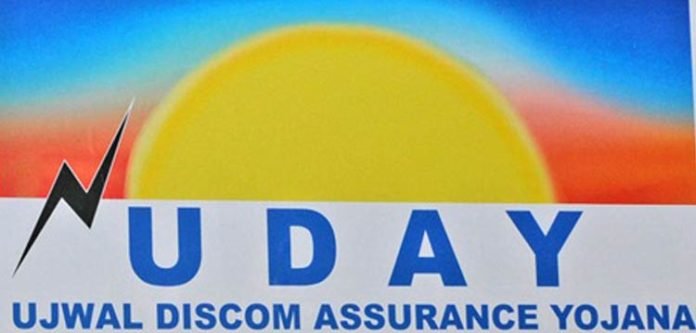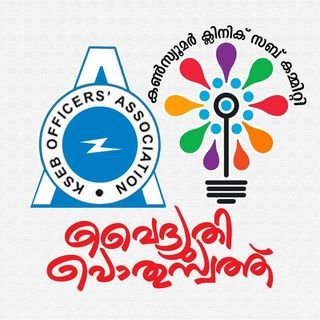Four years after it was launched, UDAY — the NDA government’s “path breaking reform” to revive electricity distribution companies (discoms) — is unravelling.
Discom losses, which had progressively reduced in the first couple of years since the scheme’s rollout in November 2015, have rebounded in FY ’19 to nearly double the losses recorded the previous year. The UDAY (Ujwal Discom Assurance Yojana) scheme now seems to be charting the same course as the earlier two unsuccessful attempts to set right the distribution sector.
Book losses of discoms, which had reduced from Rs 51,562 crore in FY ’16 to Rs 15,132 crore in FY ’18, have nearly doubled this financial year to Rs 28,036 crore, according to data updated till September-end this year. The data also points to discoms lagging behind in eliminating the gap between the average cost of supply and realisable revenue (ACS-ARR gap). Discoms have also missed the FY ’19 UDAY target to bring down their aggregate technical and commercial (AT&C) losses to 15 per cent.
Given the faltering achievements, officials indicated the possibility of a new scheme being rolled out to address UDAY’s shortcomings. The primary reason for failure, as is being recognised in policy circles, is the failure of discoms to collect the full cost that they pay for power — the same issue that had led to the floundering of the previous two schemes.
A well-meaning scheme that was aimed as a pointed intervention to the weakest link in electricity value chain — power distribution — UDAY seems to have faltered in repeating some of the mistakes of the past. The rebound in discom losses in FY ’19 alongside the increase in discom dues to generators, has prompted the possibility of a recast of the scheme.
“A new scheme is now being readied as a kind of replacement for UDAY,” an official said. While the contours of this new scheme are being worked out, the broad idea is that in the revised scheme, discoms can only remain in the public sector if they get to a situation where their deficit is under control. Or else, states will be asked to implement different models involving the private sector, like the franchise or PPP models. The Centre is also likely to back up the new scheme by providing some grant support, which it did not do in UDAY.
UDAY — launched by former Power Minister Piyush Goyal in November 2015, under which state governments took over 75 per cent of the debt of their discoms, issuing lower-interest bonds to service the rest of the debt — was packaged as a fix for a sector where the upstream side(generation) was drawing investments even as the downstream (distribution) side was leaking like a sieve. In return, discoms were given target dates (2017-19) to meet efficiency parameters like reduction in power lost through transmission, theft and faulty metering.
The scheme had some positives, though. Of the 28 states that implemented it, 10 have shown either reduced losses or profits in FY ’19. Also, even as most states registered an improvement in reducing the ACS-ARR gap and in bringing down AT&C losses, they are way behind in achieving the targets as per the UDAY schedule — a trajectory that bears similarity to how the two previous attempts had run aground.
The Ministry of Power has maintained that UDAY was different from the earlier attempts as it factored in interventions in coal, generation and transmission sectors as well, instead of just focusing on distribution. In 2001, the Atal Bihari Vajpayee-led NDA government had launched the APRDP programme to bring down the AT&C losses of discoms by providing them grants to upgrade their transmission infrastructure, which the discoms were unable to subsequently use due to several reasons. Again in 2008, the UPA government restructured this scheme and relaunched it as R-APDRP.

Admitting that the scheme had run aground after having provided some relief from these accumulated liabilities when it was launched in 2015, a senior government official said the gap between the cost of power supply for discoms and the bills they realise from consumers was pegged at close to Rs 1.5 lakh crore. This was despite states providing support of close to Rs 85,000-90,000 crore to distribution utilities. The gap leads to further stresses and forces discoms to default on payments.
“They (discoms) delay the bills of everyone — private sector and public sector — and the situation is that while UDAY provided some relief from these accumulated liabilities when it was launched in 2015, by the time the last year came, there was again that kind of stress or bills were not being paid,” the official said. Even until July 2019, unpaid bills added up to Rs 57,000 crore.
As on December 17, only four states — Himachal Pradesh, Gujarat, Maharashtra and Karnataka — had recorded an ACS-ARR below 0, while the rest recorded gaps ranging from Rs 0.01/unit to Rs 2.13/unit. A major reason for discoms being unable to bridge this gap is delayed tariff hikes by states, say experts.
The Appellate Tribunal for Electricity (APTEL) in September had noted that, between 2015-16 and 2018-19, it had not received any compliance reports related to its earlier orders directing states to ensure timely tariff revisions every year. The UDAY website states that 25 out of 27 states and union territories revised their tariffs by December.
“Just saying that the tariffs have been revised is not enough, because there is little clarity on whether the increase is enough to close the ACS-ARR gap for each state,” Lekha Chakraborty, professor at Delhi-based National Institute of Public Finance and Policy, said. AT&C losses, too, remain higher than 15 per cent for most states — only around seven states had recorded losses of less than this amount.
“The problem with UDAY, and any other scheme like this, is that you can achieve (certain targets) in the short term by doing some financial engineering and providing some financial package. But, in order to sustain that improvement, you have to have efficiency gain in that system. This means the AT&C losses need to go down, and billing and collection efficiencies should go up. If you just try to generate profit or minimise losses by increasing tariffs, you are building in theft into the system,” said Devendra Kumar Pant, Chief Economist, India Ratings and Research.
The biggest problem, though, is that the outstanding dues of discoms towards power purchases have risen sharply, after registering a decline immediately post-UDAY — a clear sign that the scheme is losing impetus after some initial success. This, according to officials, could be an indication of financial stress in some discoms, entailing the risk of fiscal surprise from their future bailouts.
Queries sent to the power ministry’s spokesperson on Sunday did not elicit a response.
According to the government’s Payment Ratification and Analysis in Power Procurement for bringing Transparency in Invoicing of Generators (PRAAPTI) web portal, outstanding dues to power generators had risen to Rs 81,964 crore at the end of October 2019 from Rs 54,664 crore in the same period last year. Discoms across states have already started defaulting on power purchase agreements signed with renewable energy players.
There’s yet another ticking time bomb, which would play out after the scheme winds up in March 2020. Given that the coupon rate on UDAY bonds are at a premium over those on SDL (state development loans) bonds, the cost of debt servicing has gone up for the UDAY states. The impact on state finances is likely to continue much beyond the terminal year due to interest payment on UDAY bonds and redemption of these bonds — a grim prospect for most states combating a tight fiscal situation amid a continuing slowdown.
Outstanding liabilities of states have been growing at double digit rate since 2015-16 (except 2018-19), resulting in a rise in the debt to GDP ratios, and budget estimates suggest that 16 states and UTs expect to record higher debt-GSDP ratio in 2019-20, according to RBI data.”While the impact of UDAY on state finances from interest payments and redemptions is predictable, the impact of future losses takeover is inherently uncertain as it is dependent upon the realised financial performance of discoms,” the RBI said in its latest report on state budgets.
The unraveling of the scheme now deepens that uncertainty.



















